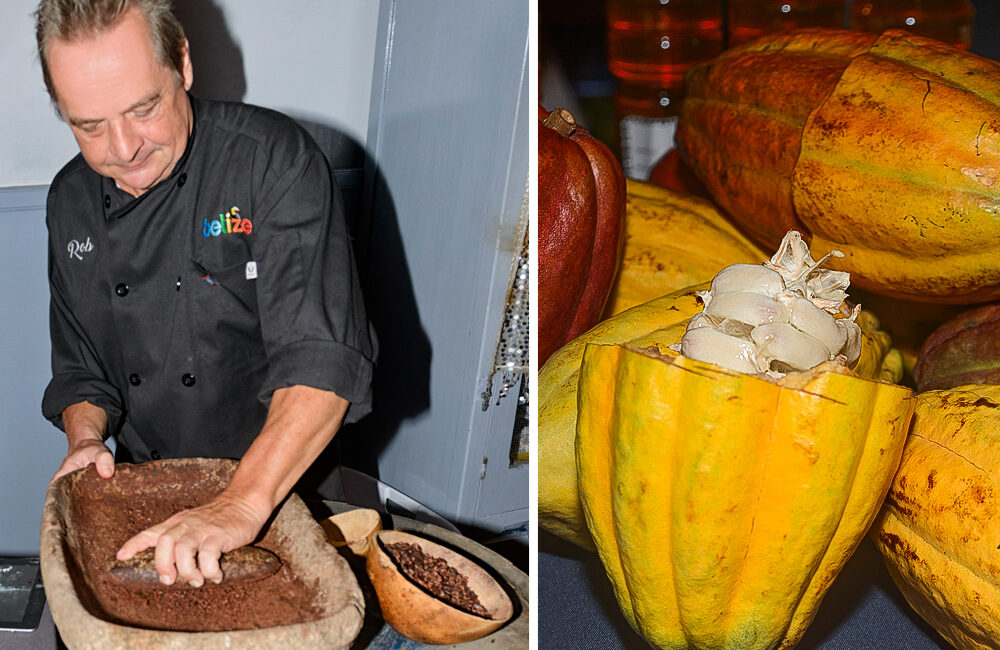This month of May, you will notice festivals and events celebrating chocolate all over Belize. At some of these events you’ll be able to learn how the Maya traditionally made chocolate and even get to experience making your own chocolate.
The history of chocolate making in Belize and Central America is deeply rooted in ancient civilizations and has continued to evolve over the centuries. The cultivation and consumption of cacao, the tree from which chocolate is derived, have played significant cultural and economic roles in the region.
The ancient Mayan civilization, including present-day Belize, was among the earliest to cultivate and consume cacao. The Mayans considered cacao a sacred and valuable crop, using cacao beans as currency and incorporating them into religious rituals. They prepared beverages by grinding roasted cacao beans and adding spices like chili, vanilla, and honey, creating a bitter, frothy drink.
With the arrival of Spanish explorers and colonizers in the 16th century, cacao and chocolate gained attention in Europe. Spanish conquistadors encountered cacao during their conquests and introduced it to Europe, where it quickly gained popularity.
During the colonial era, Belize, known as British Honduras until 1973, was a British colony heavily involved in agricultural production. In the 18th and 19th centuries, cacao plantations were established in Belize, and raw cacao became one of the country’s major exports. The cacao was primarily exported to Europe, where it was used to produce chocolate. For many years, it was widely believed that the best chocolate came from European countries like Switzerland and Belgium.
However, in recent years, there has been a resurgence of interest in cacao production in Belize and Central America. Small-scale farmers and cooperatives have started cultivating cacao again, focusing on high-quality, organic, and sustainable practices. Several companies, such as Cotton Tree Chocolate and Na Qwe, located mainly in the Punta Gorda area, produce world-class chocolate products.
There is also a growing trend of bean-to-bar chocolate production in the region. Artisanal chocolate makers are emerging, producing chocolates with unique flavors that highlight the regional characteristics of the cacao beans. Visitors to Maya Center, near Parrot Cove Lodge, can enjoy a bean-to-bar chocolate tour and even make their own chocolate under the guidance of Julio Saqui, the owner of Che’il Mayan Chocolate Factory. It’s a great way to spend time while planning a hike to the jaguar reserve.






